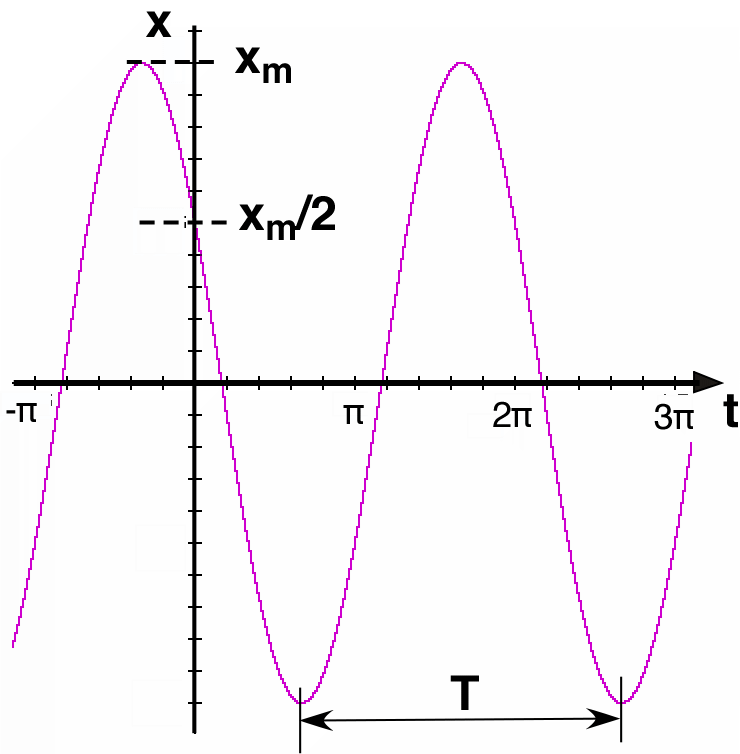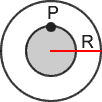Use:
|
Part I. |
|
| Part II. 1. | |
| 2. | |
| Total: |
Part I. Do all 8 questions. 5 pts each
Use: G = 6.7 x 10-11 Nm2/kg2
Use: ![]() 2
= 10
2
= 10
 1.) The
correct equation for the SHM (Simple Harmonic Motion) described in the graph
is
1.) The
correct equation for the SHM (Simple Harmonic Motion) described in the graph
is
2. If the amplitude of SHM is increased from xm to 2xm the total energy is multiplied by:
3.) If the frequency of SHM is increased from f to 2f the total energy is multiplied by:
4.) If a SHO (Simple Harmonic Oscillator) is at x = xm for t = 0, its equation for x(t) must be
x(t) = ______________________________________ (Fill in the correct expression)
5.) A 2 kg mass oscillates with SHM with a frequency of f =1.0 Hz and an amplitude of xm = 0.30m. Its total energy is:
6.) An object released from rest on the surface of a spherical asteroid of radius R = 500 km with no atmosphere accelerates downward toward the center of the asteroid with an acceleration of a = 0.67m/s2. The mass of the asteroid is:
 7.) In a solid
uniformly dense sphere of radius R, let us look at a small mass m at the point
P. To compute the net gravitational force on m we have to use:
7.) In a solid
uniformly dense sphere of radius R, let us look at a small mass m at the point
P. To compute the net gravitational force on m we have to use:
8.) Each planet can be considered a satellite moving around the sun because the sun's attractive force is much larger than any other force on any given planet.
What is a constant for all planets? Use: r = radius of planets' orbits
T = period of planets' orbits
v = tangential speed of planets
Part II. Do both problems. 30 pts each. BE NEAT. WRITE COMPLETE EQUATIONS. SHOW ALL YOUR WORK.
 1.)
A high tech tower is built with its top one earth radius above the earth's surface.
Calculate the quantities that are requested below in terms of G, m, ME,
and RE.
1.)
A high tech tower is built with its top one earth radius above the earth's surface.
Calculate the quantities that are requested below in terms of G, m, ME,
and RE.
Note: Neglect the Earth's rotation in this problem and neglect air friction!
2.) A simple harmonic oscillator of mass 2.0 kg oscillates
according to the equation: x = 4.0 cos ![]()
Note: The time t is given in seconds and the displacement x in m!
Calculate: